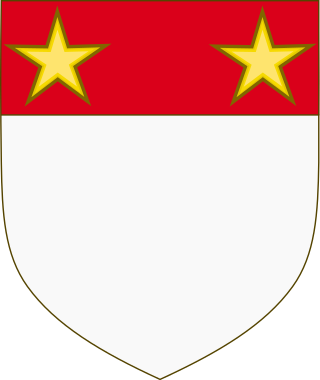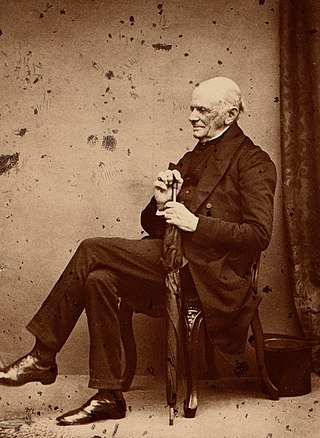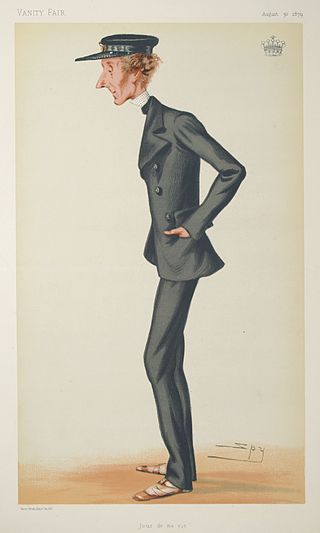| | | | | | | | | | | | King Edward III
(1312–1377) |
|
| | | | | | | | | | | | | | | |
|
| | | | | | | | | | | | John of Gaunt
(1340–1399)
Duke of Lancaster |
|
| | | | | | | | | | | | | | | | | | | | | |
| | | | | | | | | |
| | | | | | | | King Henry IV
(1367–1413) | | | | | | Joan Beaufort
(c. 1379–1440)
Countess of Westmorland |
|
| | | | | | | | | | | | | | | | | | | | | | | | | | |
| | | | | | | | | | | | | | | | | | | |
| | | | | | | | | Duke of Bedford (1st creation), 1414
Duke of Bedford (2nd creation), 1433 | | | | | | | | | | | | | | |
|
King Henry V
(1386–1422) | | | | | | | John of Lancaster
(1389–1435)
Duke of Bedford | | | | | | | | | | | | | | |
|
| | | | | | | | | Dukedom of Bedford (1st creation) extinct, 1432
Dukedom of Bedford (2nd creation) extinct, 1435 | | | | | | | | | | | | | | |
|
| | | | | | | | | | | | | | | | | | | | | | | | | |
|
| | | | | Catherine of Valois
(1401–1437) | | Owen Tudor
(1400–1461) | | Cecily Neville
(1415–1495)
Duchess of York | | | | | | Richard Neville
(1400–1460)
5th Earl of Salisbury |
| | | |
| | | | | | | | | | | | | | | | | | | | | | | | | | | | | |
| | | | | | | | | |
| | | | | | | | | | Duke of Bedford (5th creation), 1485 | | | | | | | | | | | | | | | |
| | | | |
King Henry VI
(1421–1471) | | Edmund Tudor
(c. 1430–1456)
1st Earl of Richmond | | Jasper Tudor
(c. 1431–1495)
Duke of Bedford | | King Edward IV
(1442–1483) | | King Richard III
(1452–1485) | | John Neville
(c. 1431–1471)
1st Marquess of Montagu |
|
| | | | | | | | | Dukedom of Bedford (5th creation) extinct, 1495 | | | | | | | | | | | | | | | |
| | | | |
| | | | | | | | | | | | | | | | | | Duke of Bedford (4th creation), 1478 | | Duke of Bedford (3rd creation), 1470 |
|
| | | | King Henry VII
(1457–1509) | | | | | | Elizabeth of York
(1466–1503) | | George Plantagenet
(1477–1479)
Duke of Bedford | | George Neville
(c. 1457–1483)
Duke of Bedford |
| | | | |
| | | | | | | | Baron Russell, 1539
Earl of Bedford (3rd creation), 1551 | | | | | | Dukedom of Bedford (4th creation) extinct, 1479 | | Dukedom of Bedford (3rd creation) extinct, 1478 |
|
| | | | | | | | John Russell
(c. 1485–1555)
1st Earl of Bedford, 1st Baron Russell |
|
| | | | | | | | | | | |
|
| | | | | | | | Francis Russell
(1527–1585)
2nd Earl of Bedford, 2nd Baron Russell |
|
| | | | | | | | | | | | | | | | | |
| | | | | | | | | | | | | | | |
| | | | | | | | | | | | | | | Baron Russell of Thornhaugh, 1603 |
|
Edward Russell
(1551–1572)
Lord Russell | | John Russell
(c. 1553–1584)
Lord Russell | | Francis Russell
(c. 1554–1585)
Lord Russell | | William Russell
(c. 1558–1613)
1st Baron Russell of Thornhaugh |
|
| | | | | | | | | | | | | | | | |
|
| | | | | | | | Edward Russell
(1572–1627)
3rd Earl of Bedford, 3rd Baron Russell | | Francis Russell
(1593–1641)
4th Earl of Bedford, 4th Baron Russell, 2nd Baron Russell of Thornhaugh |
|
| | | | | | | | | | | | | | | | |
| | | | | |
| | | | | | | | Duke of Bedford (6th creation) and Marquess of Tavistock, 1694
Baron Howland, 1695 | | | | | |
|
| | | | | | | | William Russell
(1616–1700)
1st Duke of Bedford, 1st Marquess of Tavistock, 5th Earl of Bedford, 5th Baron Russell, 3rd Baron Russell of Thornhaugh, 1st Baron Howland | | Edward Russell
(1626–1665) |
|
| | | | | | | | | | | | | | | | | |
| | | | | | | | | | |
| | | | | | | | | | | | | | | Earl of Orford (1st creation), Viscount Barfleur and Baron of Shingay, in the County of Cambridge, 1697 |
|
Francis Russell
(1638–1679)
Lord Russell | | William Russell
(1639–1683)
Lord Russell | | Margaret Russell
(1656–1702) | | Edward Russell
(1652–1727)
Earl of Orford | | Robert Walpole
(1650–1700) |
|
| | | | Attainted, 1683 | | | | | | Earldom of Orford (1st creation) extinct, 1727 | | | | | | | | | | |
| | | | |
| | | | | | | | | | | | | | | | | Earl of Orford (2nd creation), Viscount Walpole and Baron Walpole of Houghton in the County of Norfolk, 1742 | | Baron Walpole of Wolterton in the County of Norfolk |
|
| | | | Wriothesley Russell
(1680–1711)
2nd Duke of Bedford, 2nd Marquess of Tavistock, 6th Earl of Bedford, 6th Baron Russell, 4th Baron Russell of Thornhaugh, 2nd Baron Howland | | | | | | | | | | Robert Walpole
(1676–1745)
1st Earl of Orford, 1st Viscount Walpole, 1st Baron Walpole of Houghton | | Horatio Walpole
(1678–1757)
1st Baron Walpole of Wolterton |
|
| | | | | | | | | | | | | | | | | | | | | | | | | | | |
| | | | | | | | | | | | | | | | |
| | | | | | | | | | Baron Walpole of Walpole in the County of Norfolk | | | | | | | | | | | | Earl of Orford (3rd creation), 1806 |
|
Wriothesley Russell
(1708–1732)
3rd Duke of Bedford, 3rd Marquess of Tavistock, 7th Earl of Bedford, 7th Baron Russell, 5th Baron Russell of Thornhaugh, 3rd Baron Howland | | John Russell
(1710–1771)
4th Duke of Bedford, 4th Marquess of Tavistock, 8th Earl of Bedford, 8th Baron Russell, 6th Baron Russell of Thornhaugh, 4th Baron Howland | | Robert Walpole
(1701–1751)
2nd Earl of Orford, 2nd Viscount Walpole, 2nd Baron Walpole of Houghton, 1st Baron Walpole of Walpole | | Horace Walpole
"Horatio"
(1717–1797)
4th Earl of Orford, 4th Viscount Walpole, 4th Baron Walpole of Houghton, 3rd Baron Walpole of Walpole | | Maria Walpole
(1725–1801) | | Horatio Walpole "the Younger"
(1723–1809)
1st Earl of Orford, 4th Baron Walpole of Walpole, 2nd Baron Walpole of Wolterton |
|
| | | | | | | | | | | | | | Earldom of Orford (2nd creation) extinct, 1797 | | | | | | | | | | |
|
| | | | Francis Russell
(1739–1767)
Marquess of Tavistock | | George Walpole
(1730–1791)
3rd Earl of Orford, 3rd Viscount Walpole, 3rd Baron Walpole of Houghton, 2nd Baron Walpole of Walpole | | | | | | | | | | | | | | |
|
| | | | | | | | | | | | | | | | | | | | | | | | | | | |
| | | | | | | | | | |
Francis Russell
(1765–1802)
5th Duke of Bedford, 5th Marquess of Tavistock, 9th Earl of Bedford, 9th Baron Russell, 7th Baron Russell of Thornhaugh, 5th Baron Howland | | John Russell
(1766–1839)
6th Duke of Bedford, 6th Marquess of Tavistock, 10th Earl of Bedford, 10th Baron Russell, 8th Baron Russell of Thornhaugh, 6th Baron Howland | | William Russell
(1767–1840) | | | | | | Sophia Churchill
(d. 1797) | | Horatio Walpole
(1752–1822)
2nd Earl of Orford, 5th Baron Walpole of Walpole, 3rd Baron Walpole of Wolterton |
| |
| | | | | | | | | | | | | | | | | | | | | | | | | |
| | | | | | | | | | | | | | | | | | |
| | | | | | | | | | | | | | Earl Russell and Viscount Amberley, 1861 | | | | | |
|
Francis Russell
(1788–1861)
7th Duke of Bedford, 7th Marquess of Tavistock, 11th Earl of Bedford, 11th Baron Russell, 9th Baron Russell of Thornhaugh, 7th Baron Howland | | George William Russell
(1790–1846) | | | | | | John Russell
(1792–1878)
1st Earl Russell | | Horatio Walpole
(1783–1858)
3rd Earl of Orford, 6th Baron Walpole of Walpole, 4th Baron Walpole of Wolterton |
|
| | | | | | | | | | | | | | | | | | | | | | | | | | | | |
| | | | | | | | | |
| | | | | | | | | | Baron Ampthill, 1881 | | | | | | | | | | | | | | | |
|
William Russell
(1809–1872)
8th Duke of Bedford, 8th Marquess of Tavistock, 12th Earl of Bedford, 12th Baron Russell, 10th Baron Russell of Thornhaugh, 8th Baron Howland | | Francis Charles Hastings Russell
(1819–1891)
9th Duke of Bedford, 9th Marquess of Tavistock, 13th Earl of Bedford, 13th Baron Russell, 11th Baron Russell of Thornhaugh, 9th Baron Howland | | Odo William Leopold Russell
(1829–1884)
1st Baron Ampthill | | John Russell
(1842–1876)
Viscount Amberley | | Horatio Walpole
(1813–1858)
4th Earl of Orford, 7th Baron Walpole of Walpole, 5th Baron Walpole of Wolterton | | Robert Walpole
(1854–1931)
5th Earl of Orford, 8th Baron Walpole of Walpole, 6th Baron Walpole of Wolterton |
|
| | | | | | | | | | | | | | | | | | | | | | | | Earldom of Orford (3rd creation) extinct, 1931 |
| | | | | | | | | |
| | | | George William Francis Sackville Russell
(1852–1893)
10th Duke of Bedford, 10th Marquess of Tavistock, 14th Earl of Bedford, 14th Baron Russell, 12th Baron Russell of Thornhaugh, 10th Baron Howland | | Herbrand Arthur Russell
(1858–1940)
11th Duke of Bedford, 11th Marquess of Tavistock, 15th Earl of Bedford, 15th Baron Russell, 13th Baron Russell of Thornhaugh, 11th Baron Howland | | John Francis Stanley Russell
(1865–1931)
2nd Earl Russell | | Bertrand Arthur William Russell
(1872–1970)
3rd Earl Russell |
|
| | | | | | | | | | | | | | | | | | | | |
|
| | | | | | | | Hastings William Sackville Russell
(1888–1953)
12th Duke of Bedford, 12th Marquess of Tavistock, 16th Earl of Bedford, 16th Baron Russell, 14th Baron Russell of Thornhaugh, 12th Baron Howland | | | | | | | | | |
|
| | | | | | | | | | | | | | | | | | | | | |
| | | | | |
| | | | | | | | John Ian Robert Russell
(1917–2002)
13th Duke of Bedford, 13th Marquess of Tavistock, 17th Earl of Bedford, 17th Baron Russell, 15th Baron Russell of Thornhaugh, 13th Baron Howland | | John Conrad Russell
(1921–1987)
4th Earl Russell | | Conrad Sebastian Robert Russell
(1937–2004)
5th Earl Russell |
|
| | | | | | | | | | | | | | | | | | | | |
|
| | | | | | | | Henry Robin Ian Russell
(1940–2003)
14th Duke of Bedford, 14th Marquess of Tavistock, 18th Earl of Bedford, 18th Baron Russell, 16th Baron Russell of Thornhaugh, 14th Baron Howland | | | | | | | | | |
|
| | | | | | | | | | | | | | | | | | | | | | | | | |
| | | | |
| | | | | | | | Andrew Ian Henry Russell
15th Duke of Bedford, 15th Marquess of Tavistock, 19th Earl of Bedford, 19th Baron Russell, 17th Baron Russell of Thornhaugh, 15th Baron Howland
(b. 1962) | | | | | | Nicholas Lyulph Russell
(1968–2014)
6th Earl Russell | | John Francis Russell
(b. 1971)
7th Earl Russell |
|
| | | | | | | | | | | |
|
| | | | | | | | Henry Robin Charles Russell
(b. 2005)
styled Marquess of Tavistock |
|













